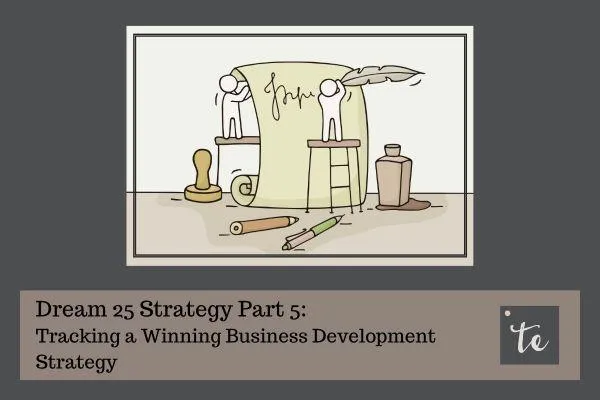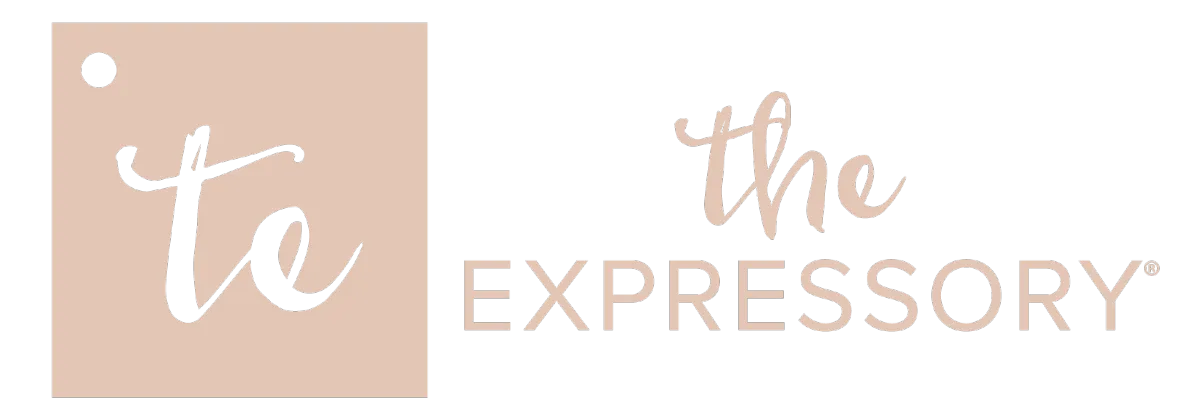
What Swimming Teaches Us About Team Relationships
In my latest video, I break down how swimming teaches us the importance of these relationship-building efforts and the specifics of what we as leaders need to nurture with our teams.
Holiday Gift Insights - What Everyone Else Is Doing
In an effort to simplify the decision-making process, we're sharing some of the trends we've seen with gifting over the years. We're even sharing our best seller and why that gift had such success.
What Makes A Successful Holiday Gift? The Travel Bag Edition
Last year we had the opportunity to work with one of our clients in the travel and tourism space to design an experience that delivered their highest engagement yet.

Dream 25 Strategy Part 5: Tracking a Winning Business Development Strategy
New business development processes are one of those things that many only spend time on when the referrals dry up. By that time, the needs have generally become too urgent to develop a repeatable strategy for this important effort. Which is why we’ve dedicated a five-part series about designing a new business strategy that will run for the course of a year. And with any luck, there won’t be many changes required to run it through for subsequent lists of prospects.
The strategy we’ve been walking through is referred to as The Dream 25 Strategy. It’s designed to help you keep your pipeline full by focusing on a specific set of high-potential prospects. Stephen Woessner of Predictive ROI explains the strategy as “the accelerant in your business strategy,” emphasizing that an agency cannot effectively engage more than 25 top prospects at any given time due to the necessity for persistence and personalization.
If you missed any of the steps in this series, and you want to continue to follow-along, you can revisit here.
By this point in the series, you should have a complete list of prospects, deep research on each company, and a list of touchpoint ideas, based on themes. The last thing roadblock to implementing a new business strategy seems to be a belief that even if you execute it, you won’t be able to measure it.
With this blog, please allow me to help you implement and measure your hard work.
Executing Your Dream 25 Strategy
Now that you have a list of all the ideas for your touchpoints, you’re going to want to start plotting out the execution of these experiences. As we mentioned in part 4, you will want to send something every seven weeks through the course of the year.
For some, it might be easy to plot out all eight of those right away. For others, you might find it easier to arrange three touchpoints at a time. So, let’s start there. Looking at the list of ideas you developed based on your themes, select three that make the most sense. For some ideas, there might be a time of year where that concept works best. Maybe some ideas have to wait until an event draws near so you can make that invite with one of your touchpoints. And maybe you just want to start with the ones that you feel will be the easiest to execute.
Regardless of the decision, start documenting that plan. You could use a format that looks like this:

By documenting up front, you will know exactly what needs to be sent at what point in time. It also allows you to delegate the execution to the team.
If you are planning three touchpoints at a time, you’ll repeat this process. If you’re planning for the full eight up front, then you will want to revisit as you move through each touchpoint. Based on the learning and results of the earlier touchpoints you’ll want to decide if any of them should be adjusted.
What to Measure in the Dream 25 Strategy
From the moment that you begin sending your touchpoints, you’re going to want to be prepared to measure. This is because at first glance it is not obvious how you should measure the success of this work. Most people think that the only way to know if this strategy worked is if they see an increase in conversion. However, we believe you’re missing a bigger picture if you’re only watching for that.
In our experience, the Dream 25 effort showcases success if you monitor for engagement and opportunities.
At The Expressory, we create a spreadsheet with extremely specific engagement metrics that are monitored for each touchpoint. By documenting each interaction and its outcome, you can quantitatively assess how your efforts are translating into business opportunities.
Here are the measures we monitor:
Posts
Emails
Texts
Calls
Other
Take the total count of these metrics and divide that by 25 (or the number of contacts you mailed to) and this is your engagement metric.
You should also measure the count of these items:
Appointments Scheduled
Opportunities Discussed
Estimated Value of the Opportunities
Podcast or Speaking Invitations
Referrals
One suggestion is to put these columns after each of the touchpoints you defined so that you’ll collect it all in one place.
Make it a team effort to report each mention of the touchpoint from one of the recipients. The same recipient might talk to multiple team members about the item and that counts as two points of engagement. You might receive multiple social posts from some or maybe even conversation about the gift in front of a group. We’ve had cases where multiple recipients showcase their touchpoints on webinars, which sparks great conversation.
Remember, every single point of engagement is your opportunity to move the needle on the relationship you’re building. Make a game of seeing how far you can keep the engagement spiraling.
The Dream 25 process is not simple, but it is highly worth your time. It requires a blend of strategic thinking, creativity, and meticulous execution. For those willing to invest in this level of personalized engagement, the returns can be substantial — not just in immediate sales but in long-term client relationships and brand authority. Look at a case study from the initial touchpoint in one of our client’s plans.
By following this structured approach and keeping detailed records of the outcomes, you’ll not only justify the effort and resources, but also continually refine your approach.
We’re here to help you succeed with this valuable effort. If we can help move you forward at all, it would be our pleasure. Bring your questions or challenges to one of our monthly Q&A sessions. Or feel free to schedule time to chat one on one.
Address:
1500 S. Sylvania Ave #106
Sturtevant WI 53177
Phone:
414.243.8971

